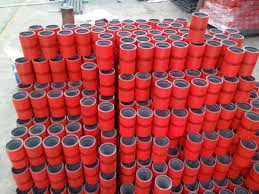- Afrikaans
- Albanian
- Amharic
- Arabic
- Armenian
- Azerbaijani
- Basque
- Belarusian
- Bengali
- Bosnian
- Bulgarian
- Catalan
- Cebuano
- Corsican
- Croatian
- Czech
- Danish
- Dutch
- English
- Esperanto
- Estonian
- Finnish
- French
- Frisian
- Galician
- Georgian
- German
- Greek
- Gujarati
- Haitian Creole
- hausa
- hawaiian
- Hebrew
- Hindi
- Miao
- Hungarian
- Icelandic
- igbo
- Indonesian
- irish
- Italian
- Japanese
- Javanese
- Kannada
- kazakh
- Khmer
- Rwandese
- Korean
- Kurdish
- Kyrgyz
- Lao
- Latin
- Latvian
- Lithuanian
- Luxembourgish
- Macedonian
- Malgashi
- Malay
- Malayalam
- Maltese
- Maori
- Marathi
- Mongolian
- Myanmar
- Nepali
- Norwegian
- Norwegian
- Occitan
- Pashto
- Persian
- Polish
- Portuguese
- Punjabi
- Romanian
- Russian
- Samoan
- Scottish Gaelic
- Serbian
- Sesotho
- Shona
- Sindhi
- Sinhala
- Slovak
- Slovenian
- Somali
- Spanish
- Sundanese
- Swahili
- Swedish
- Tagalog
- Tajik
- Tamil
- Tatar
- Telugu
- Thai
- Turkish
- Turkmen
- Ukrainian
- Urdu
- Uighur
- Uzbek
- Vietnamese
- Welsh
- Bantu
- Yiddish
- Yoruba
- Zulu
Understanding Metric Pipe Couplings and Their Applications in Various Industries
Understanding Metric Pipe Couplings A Comprehensive Guide
In industrial applications, the seamless and efficient connection of pipes is critical. This is where pipe couplings come into play, providing the necessary links between various pipe segments. Among these, metric pipe couplings have gained significant popularity due to their precision engineering and standardized measurements. This article aims to delve into the details of metric pipe couplings—what they are, their types, advantages, and key considerations in their selection and application.
What Are Metric Pipe Couplings?
Metric pipe couplings are fittings used to connect two or more pipe sections, allowing for the continued flow of fluids, gases, or solids. The term metric indicates that the dimensions and specifications of these couplings are based on the metric system, which is the standard in many countries across the globe. The use of metric measurements promotes consistency and compatibility across various manufacturers and applications, making it easier for engineers and technicians to work with standardized components.
Types of Metric Pipe Couplings
There are several types of metric pipe couplings, each suited for different applications and materials. The most common types include
1. Coupled Fittings These couplings are designed for straightforward connections between two pipes. They can be either threaded or slip-on, providing flexibility and ease of installation.
2. Union Couplings Unions allow for the quick disconnection of pipes for maintenance or replacement, which is essential in applications where access is limited.
3. Expansion Couplings These are specifically designed to absorb thermal expansion or contraction in piping systems, preventing stress on the pipes and joints.
4. Flexible Couplings These are designed to accommodate alignment issues or differential movements between connected pipes. They are particularly useful in systems subject to vibrations or shifts.
Advantages of Metric Pipe Couplings
metric pipe couplings

One of the key advantages of using metric pipe couplings is the ease of interchangeability. Since the dimensions are standardized, it becomes straightforward to replace or upgrade components without worrying about compatibility. Additionally, metric couplings often feature innovative designs that improve flow efficiency, minimize pressure drops, and enhance overall system performance.
Furthermore, the metric system facilitates precise measurements, reducing errors that can occur with conversions between different measurement systems. This precision is particularly beneficial in applications that require exact tolerances, such as hydraulic systems and chemical processing.
Key Considerations for Selection and Application
When selecting metric pipe couplings, several factors need to be considered
1. Material Compatibility Depending on the application, it is crucial to choose couplings made of materials that can withstand the chemical and physical stresses they will encounter. Materials commonly used include PVC, steel, brass, and stainless steel.
2. Pressure Ratings Each coupling type has a specific pressure rating. Ensure that the couplings selected can handle the maximum pressure expected in the system without failure.
3. Temperature Resistance Like pressure, temperature plays a significant role in the selection process. Couplings should be able to maintain their integrity at the operational temperature range they will face.
4. Installation Requirements Some couplings may require specialized tools or skills for installation. Understanding the installation requirements can save time and reduce the chances of errors during setup.
5. Regulatory Compliance In many industries, using components that meet specific standards and regulations is mandatory. This is especially true in plumbing, industrial, and chemical applications.
Conclusion
Metric pipe couplings are an essential component in many piping systems, offering a reliable means of creating strong, leak-free connections. Their standardization in measurements makes them incredibly versatile and widely used across various industries. Understanding the different types of couplings, their advantages, and the key factors for selection ensures that engineers and technicians can make informed choices that enhance the efficiency and reliability of their piping systems. Whether in industrial, commercial, or residential applications, metric pipe couplings are pivotal in maintaining optimal flow and functionality.
-
Tubing Pup Joints: Essential Components for Oil and Gas OperationsNewsJul.10,2025
-
Pup Joints: Essential Components for Reliable Drilling OperationsNewsJul.10,2025
-
Pipe Couplings: Connecting Your World EfficientlyNewsJul.10,2025
-
Mastering Oilfield Operations with Quality Tubing and CasingNewsJul.10,2025
-
High-Quality Casing Couplings for Every NeedNewsJul.10,2025
-
Boost Your Drilling Efficiency with Premium Crossover Tools & Seating NipplesNewsJul.10,2025







